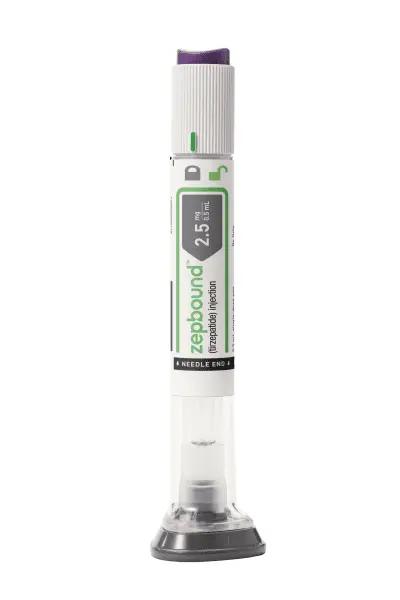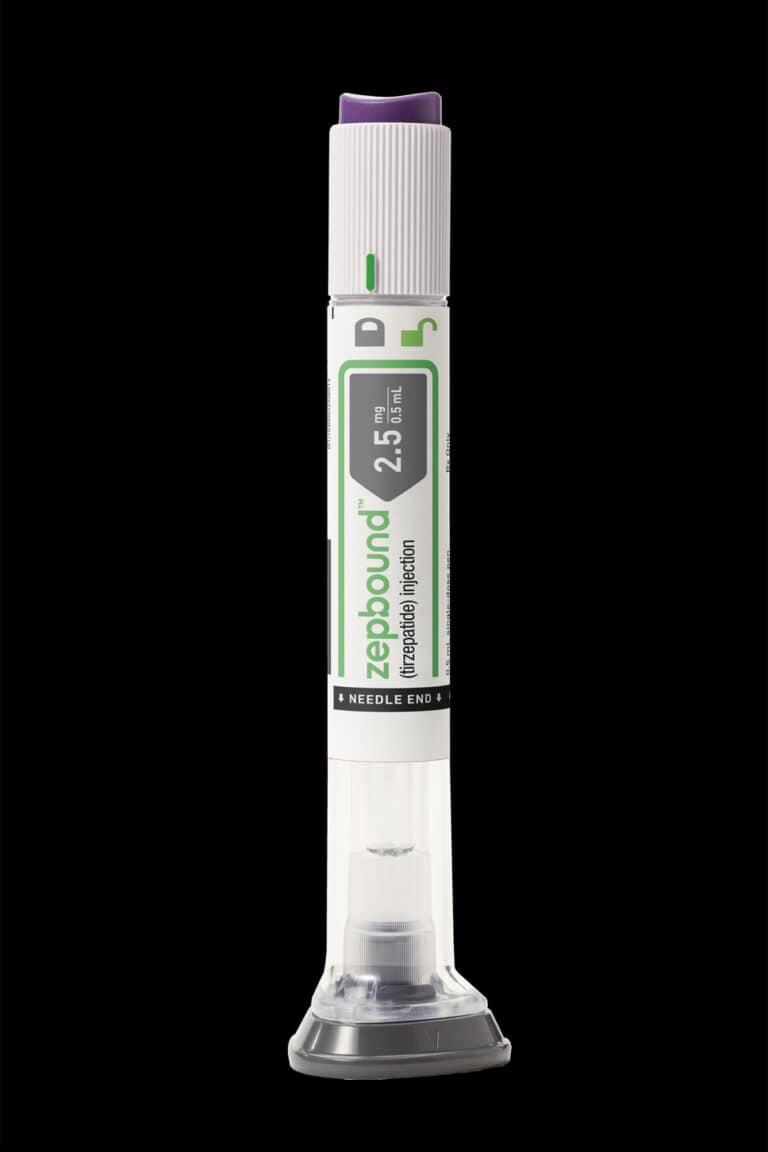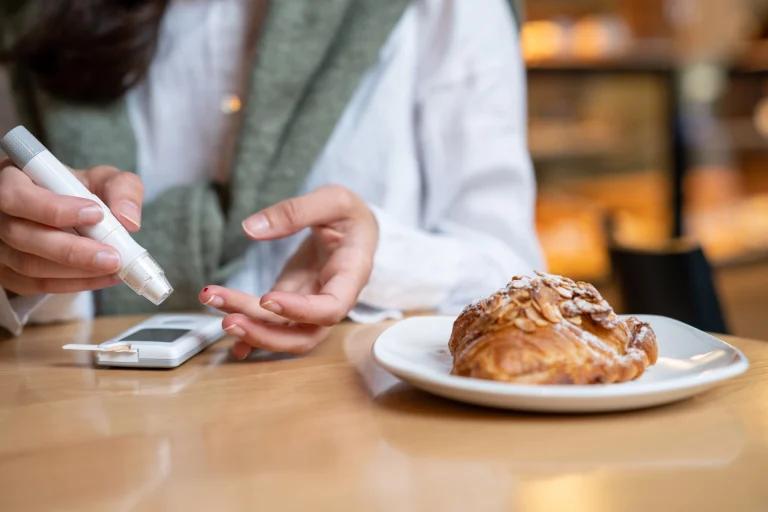Zepbound is a new FDA-approved subcutaneous injection that aids adults with obesity or excess weight in losing weight and maintaining it. It is typically used in conjunction with a reduced-calorie diet and increased physical activity. If you are considering using Zepbound, you may have some questions regarding its storage requirements. One common query is whether Zepbound needs to be refrigerated. In this comprehensive guide, we will provide you with all the information you need to know about storing Zepbound, to ensure its effectiveness and safety.
Understanding Zepbound and its benefits
Before delving into the storage requirements of Zepbound, let’s first understand what this medication is and how it can benefit individuals struggling with obesity or excess weight.
Zepbound is an injectable prescription drug that contains the active ingredient tirzepatide and is manufactured by Eli Lilly. It is designed to assist adults with weight-related medical problems in losing weight and maintaining their weight loss. When combined with a reduced-calorie diet and increased physical activity, Zepbound can provide significant results.
Zepbound targets specific mechanisms in the body to promote weight loss and contains the same active ingredient, tirzepatide. Zepbound activates receptors of hormones secreted from the intestine, such as glucagon-like peptide-1 (GLP-1) and glucose-dependent insulinotropic polypeptides (GIP), which reduce appetite and food intake.
One of the unique aspects of Zepbound is its once-weekly dosing schedule. This convenience makes it easier for individuals to adhere to their weight loss regimen. Moreover, Zepbound comes in a single-dose pen, eliminating the need for mixing or handling needles.
Some examples of other weight loss medicines that are FDA approved (Food and Drug Administration) include:
- Semaglutide (Wegovy, Ozempic)
- Liraglutide (Saxenda)
- Tirzepatide (Zepbound)
- Phentermine/topiramate (Qsymia)
- Bupropion/naltrexone (Contrave)
- Orlistat (Xenical)
Key benefits of Zepbound
Zepbound offers several key benefits for individuals seeking effective weight loss solutions:
- Convenience: Zepbound is administered once a week, making it easier to incorporate into your routine
- Efficiency: Zepbound has been proven to help individuals with obesity or excess weight lose weight and maintain their weight loss
- Reduced-calorie diet: Zepbound is used in conjunction with a reduced-calorie diet to support healthy weight loss
- Increased physical activity: Physical activity is essential for weight loss, and Zepbound works best when combined with regular exercise
- Long-lasting results: Zepbound not only aids in weight loss but also helps individuals maintain their achieved weight loss over time
The benefits of Zepbound extend beyond weight loss. Clinical trials have shown that Zepbound can also help improve various weight-related medical conditions, such as high blood pressure, high cholesterol, and type 2 diabetes. By addressing these underlying conditions, Zepbound may contribute to better overall health and well-being.
Now that we understand the benefits of Zepbound, let’s address the important question: Does Zepbound need to be refrigerated?
Storing Zepbound: Refrigeration and room temperature
To ensure the efficacy and safety of Zepbound, proper storage is crucial. The storage requirements for Zepbound depend on whether the medication is in use or not.
Storage of unopened Zepbound pens
If you have unopened Zepbound pens, it is essential to follow the recommended storage guidelines to maintain their effectiveness. Unopened Zepbound pens should be stored in the refrigerator between 36°F and 46°F (2°C and 8°C). It is best to keep the pens in their original carton to protect them from light.
Storing Zepbound at room temperature
Under certain circumstances, you may need to store Zepbound at room temperature. If you plan to travel and do not have access to a refrigerator, you can keep the Zepbound pen at room temperature up to 86°F (30°C) for a maximum of 21 days. However, if you store the pen at room temperature, it should not be returned to the refrigerator. After 21 days at room temperature, any unused Zepbound pens should be discarded.
Important considerations for Zepbound storage
To ensure the safety and effectiveness of Zepbound, it is crucial to keep the following considerations in mind:
- Avoid freezing: Zepbound pens should never be frozen. If a pen has been frozen, it should be discarded, and a new pen should be used
- Check for damage: Before using a Zepbound pen, it is essential to inspect it carefully. If the pen is damaged, it should not be used, and a new pen should be obtained
- Proper labeling: When storing Zepbound pens, ensure that they are properly labeled to avoid confusion with other medications or products
- Keep out of reach: Zepbound pens should be stored out of the reach of children to prevent accidental ingestion or misuse
By following these storage guidelines, you can ensure the optimal effectiveness and safety of Zepbound.
Administering Zepbound: A step-by-step guide
Now that we have covered the storage requirements, it is important to understand how to administer Zepbound correctly. Proper administration is key to achieving the desired weight loss results. Let’s take a step-by-step look at how to use the Zepbound pen.
Step 1: Choose the injection site
Zepbound can be injected into the stomach or thighs by yourself or into the back of the upper arm with the help of another person. It is important to choose a different site for each injection to avoid injecting into the same spot repeatedly. Consult with your healthcare provider to determine the best injection site for you.
Step 2: Wash your hands
Before administering the injection, thoroughly wash your hands with soap and water to minimize the risk of infection.
Step 3: Remove the cap
With the pen locked, remove the gray cap from the Zepbound pen and discard it. Be careful not to touch the base of the pen.
Step 4: Place and unlock
Place the clear base of the pen flat against your skin at the chosen injection site. Unlock the pen by turning the lock ring.
Step 5: Press and hold
Press and hold the purple button on the pen for up to 10 seconds. The injection has started when you hear the first click. Keep holding the button until you hear the second click, indicating that the injection is complete. The gray plunger should be visible once the injection is finished.
Step 6: Dispose of the pen
After the injection is complete, safely dispose of the used Zepbound pen in an FDA-cleared sharps disposal container. If you don’t have access to a sharps container, you can use a heavy-duty plastic household container, such as a laundry detergent bottle, as long as it is properly labeled and meets the necessary safety requirements.
Missing or changing your dosing schedule
Life can be unpredictable, and there may be instances when you need to adjust your Zepbound dosing schedule. If you want to change the day of the week you take your Zepbound dose, ensure that there is a minimum of three days (72 hours) between doses.
If you happen to miss a dose of Zepbound, take it as soon as possible within four days (96 hours) of your scheduled dosing. However, if more than four days have passed, skip the missed dose and resume your regular dosing schedule. It is important not to take two doses of Zepbound within three days (72 hours) of each other.
To help you remember when to take your Zepbound dose, it is recommended to set a reminder on your phone or use any other method that suits your routine.
Protecting and disposing of your Zepbound pens
Proper storage and disposal of Zepbound pens are essential to maintain their integrity and ensure the safety of others. Here are some guidelines to follow:
How to store your Zepbound pens
To protect the effectiveness of Zepbound pens, follow these storage recommendations:
- Store your pens in the refrigerator between 36°F to 46°F (2°C to 8°C)
- If necessary, you may store your pen at room temperature up to 86°F (30°C) for up to 21 days. However, once stored at room temperature, the pen should not be returned to the refrigerator
- Discard any Zepbound pens that have not been used within 21 days after removing them from the refrigerator
- Avoid freezing the pens as this can compromise their effectiveness
- Always store your pen in its original carton to protect it from light
- Handle the pen with care, as it contains glass parts. If the pen is dropped on a hard surface, it should not be used, and a new pen should be obtained
- Keep your Zepbound pen and all medications out of the reach of children
Proper Disposal of Used Zepbound Pens
After using a Zepbound pen, it is crucial to dispose of it safely to prevent accidental needle sticks and contamination. Follow these steps for proper disposal:
- Place the used Zepbound pen in an FDA-cleared sharps disposal container immediately after use. This container is specifically designed to safely store used needles and pens
- If you do not have access to an FDA-cleared sharps disposal container, you can use a heavy-duty plastic household container, such as a laundry detergent bottle. Make sure the container is made of puncture-resistant plastic, has a tight-fitting lid, and is properly labeled
- Keep the sharps container out of the reach of children and pets to prevent accidental exposure
- Do not recycle your sharps container. Follow your community’s guidelines for the proper disposal of sharps containers
By following these guidelines, you can ensure the safe and responsible disposal of your used Zepbound pens.
Finding the right dose of Zepbound
The appropriate dose of Zepbound varies depending on individual circumstances and requirements. Your healthcare provider will work closely with you to determine the dose that best suits your needs. Let’s explore the dosing options and considerations when using Zepbound.
The starting dose
When beginning Zepbound treatment, the recommended starting dose is typically 2.5 mg once weekly. However, it is important to note that this starting dose is not indicated for chronic weight management. After four weeks of using the starting dose, the dosage should be increased to 5 mg once weekly.
Gradual dose increases
Following the initial four weeks of treatment at the 5 mg dose, your doctor may decide whether to maintain this dose or increase it further. If a dose increase is necessary, it will typically be in increments of 2.5 mg after at least four weeks on the current dose. The maximum dosage of Zepbound is 15 mg subcutaneously once weekly.
Monitoring and adjusting the dose
Throughout your Zepbound treatment, your healthcare provider will closely monitor your progress and make any necessary adjustments to your dose. It is essential to communicate any concerns or side effects you may experience to your healthcare provider. They will work with you to find the optimal dose that balances effectiveness and safety.
Managing potential side effects
Like any medication, Zepbound may cause side effects in some individuals. It is essential to be aware of these potential side effects and understand how to manage them. Here are some common side effects associated with Zepbound:
- Nausea: Some individuals may experience nausea while taking Zepbound. If you experience this side effect, consult your doctor. In the meantime, you can try eating smaller, more frequent meals and avoiding fatty foods
- Diarrhea: Diarrhea can occur as a side effect of Zepbound. Staying hydrated by drinking plenty of fluids can help manage this symptom. If diarrhea persists or becomes severe, consult your healthcare provider
- Vomiting: Vomiting is another possible side effect of Zepbound. If you experience persistent or severe vomiting, inform your healthcare provider
- Constipation: Zepbound may cause constipation in some individuals. Increasing your fiber intake and staying hydrated can help alleviate this symptom
- Stomach pain: Abdominal pain or discomfort may occur while taking Zepbound. If the pain is severe or persistent, consult your healthcare provider
- Injection site reactions: Some individuals may experience reactions at the injection site, such as redness, swelling, or pain. If you notice any unusual or concerning reactions, inform your healthcare provider
It’s important to remember that not all individuals will experience these side effects, and the severity can vary. If you have any concerns about potential side effects, consult your healthcare provider for guidance.
Conclusion
Zepbound is an effective tool for individuals seeking to lose weight and maintain their weight loss. Proper storage and administration of Zepbound is crucial to ensure its effectiveness and safety. While unopened Zepbound pens should be stored in the refrigerator, they can be stored at room temperature for up to 21 days if necessary. Remember to always follow the recommended guidelines for storage and disposal.
If you have any questions or concerns about Zepbound or its storage requirements, consult your healthcare provider. They can provide personalized medical advice based on your specific needs and circumstances. With the right information and proper use, Zepbound can be a valuable asset in your weight loss journey.
Sources
Medical Disclaimer
NowPatient has taken all reasonable steps to ensure that all material is factually accurate, complete, and current. However, the knowledge and experience of a qualified healthcare professional should always be sought after instead of using the information on this page. Before taking any drug, you should always speak to your doctor or another qualified healthcare provider.
The information provided here about medications is subject to change and is not meant to include all uses, precautions, warnings, directions, drug interactions, allergic reactions, or negative effects. The absence of warnings or other information for a particular medication does not imply that the medication or medication combination is appropriate for all patients or for all possible purposes.










